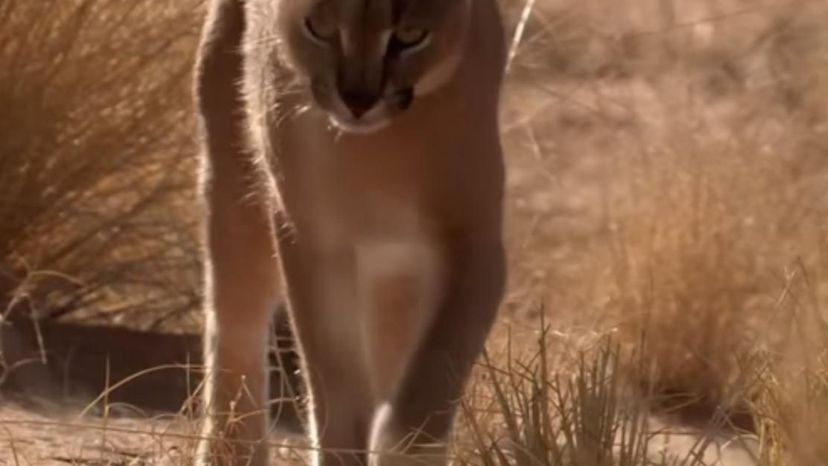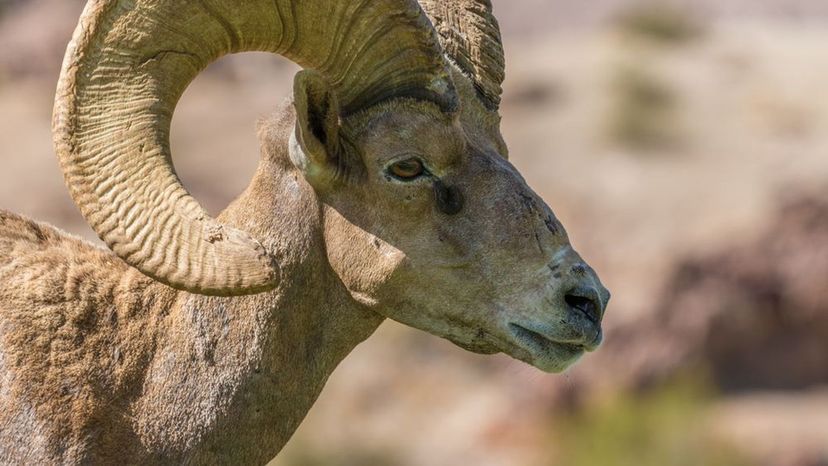
Image: Shutterstock
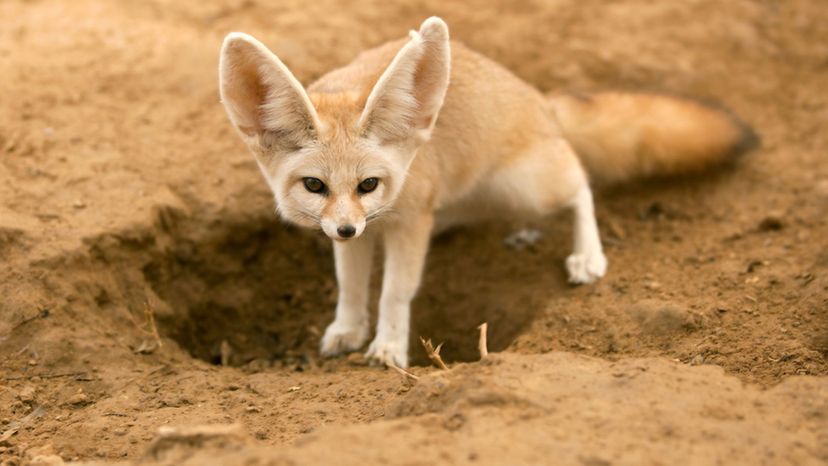
Shutterstock
Can you identify this desert animal?
Fennec
The smallest fox in the world, the Fennec is easily recognized by it's over-sized ears. At around 6 inches tall, the ears actually help to expel heat and keep the creature cool in the desert.
Llama
Jackal
Leopard
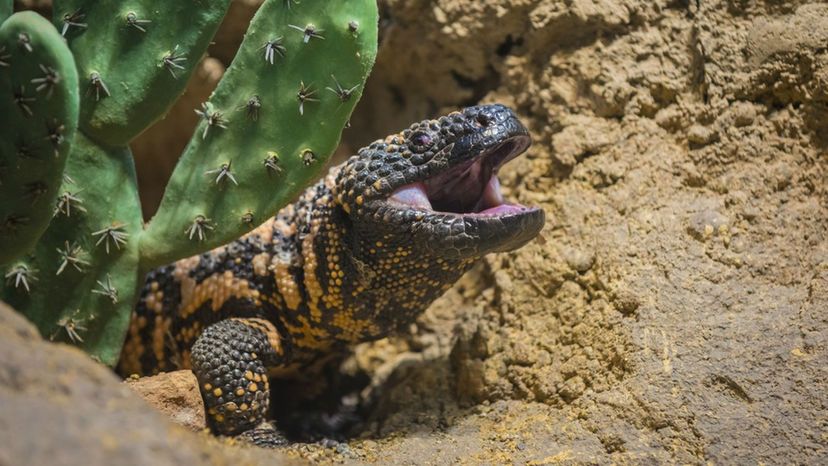
Shutterstock
Can you identify this desert animal?
Scorpion
Gila Monster
The Gila Monster ranges from 1 to 2 feet in length, and is one of only two venomous lizards on the planet. It can store fat in its tail, which means it can go quite a while without food.
Bustard
Prairie Dogs

Shutterstock
Can you identify this desert animal?
Tarantula
Hyrax
Sand Cat
Thorny Devil
The Thorny Devil, or Thorny Dragon, is an Australian lizard covered with conical spikes. These critters thrive in the desert because their scaly bodies can collect water to keep them hydrated.
Advertisement
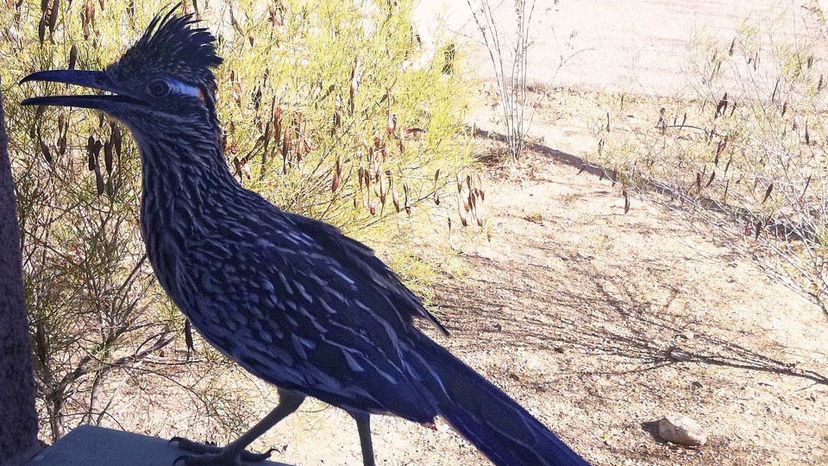
Wiki commons
Can you identify this desert animal?
Roadrunner
Forget everything you've ever seen about roadrunners on cartoons. Yes, these birds are incredibly fast runners, but they can also fly if they need to. They are also much smaller than you think, at only around 20 inches long. And no, they don't say, "Beep, Beep."
Bustard
Armadillo
Kangaroo Rat
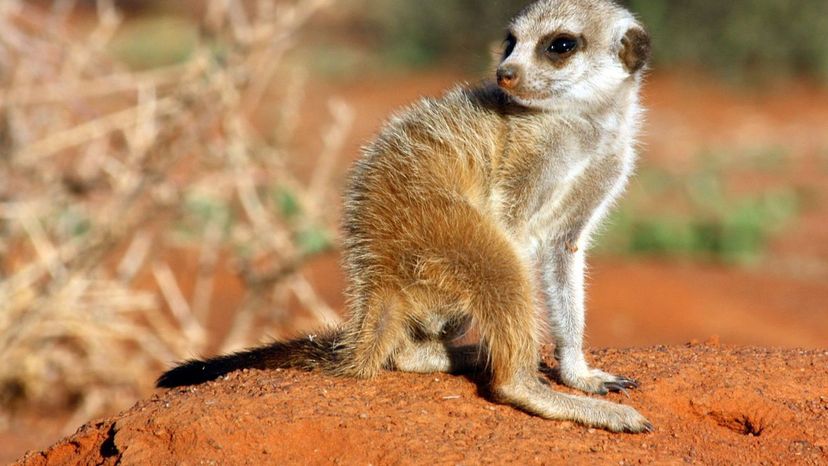
Wiki commons
Can you identify this desert animal?
Bighorn Sheep
Meerkat
The squirrel-sized Meerkat lives underground throughout Southern Africa. These social creatures team up in groups of 40 for survival and friendship.
Cougar
Oryx
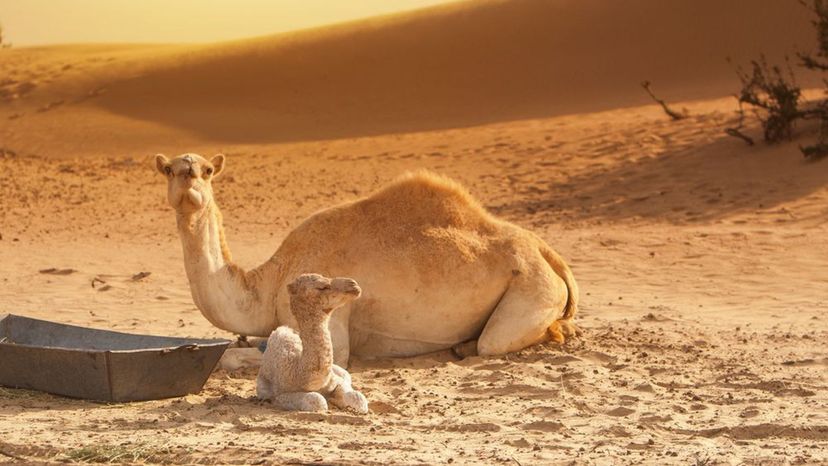
shutterstock
Can you identify this desert animal?
Gerbil
Dingo
Camel
Ninety percent of all camels on the planet are dromedary, also known as Arabian camels. These one-humped camels can go a full week without water, but when they replenish, they can drink more than 30 gallons in one trip to the watering hole.
Hyena
Advertisement

shutterstock
Can you identify this desert animal?
Scorpion
Tarantula
Monitor Lizard
Monitor lizards live in desert regions of Africa, Asia and the United States. More than 79 different species fall under this breed, and they can vary in length from around 8 inches to more than 10 feet.
Viper
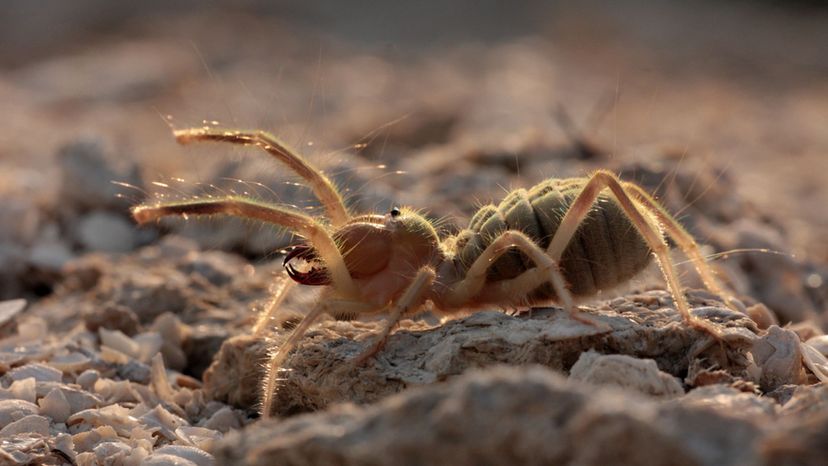
shutterstock
Can you identify this desert animal?
Camel Spider
During the Gulf War, pictures of giant camel spiders flew around the internet. While these big spiders are certainly intimidating, they are actually only about the sizeof a teacup. Of course, they can run around 10 mph, so it's still best to stay out of their way, even though they are not deadly to humans.
Armadillo
Coral Snake
Skink
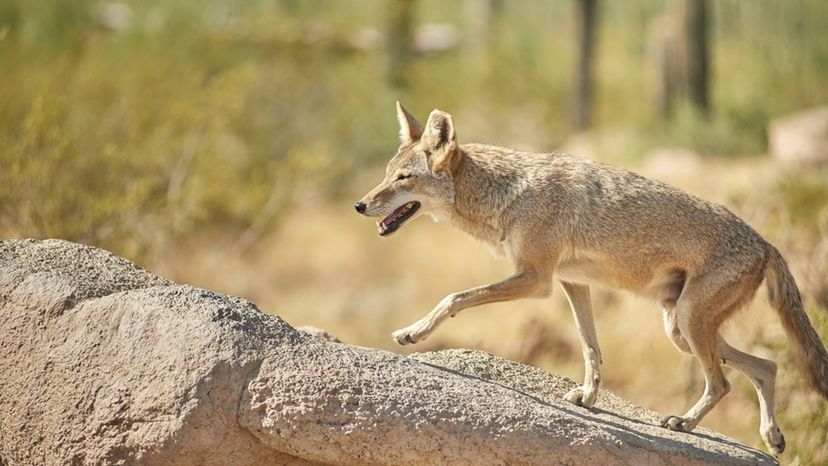
Shutterstock
Can you identify this desert animal?
Hedgehog
Coyote
The coyote is pretty much America's version of the jackal, a wild dog found in Europe and Africa. Desert-dwelling coyotes are pretty small -- only 20 pounds or so -- while mountain-dwelling coyotes can be more than two times that size.
Oryx
Addax
Advertisement
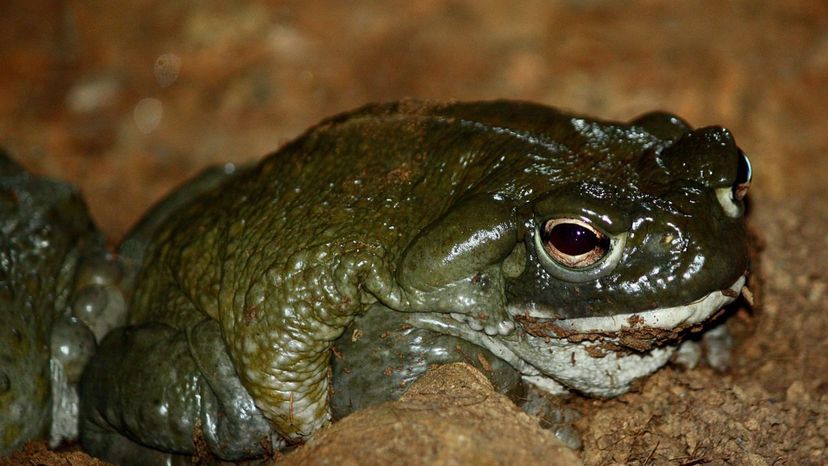
Wiki commons
Can you identify this desert animal?
Sonoran Desert Toad
One of the biggest toads in North America, the Sonoran Desert Toad is also known as the Colorado River Toad. It has surprisingly smooth skin, and has venom powerful enough to kill a domestic dog.
Tarantula
Hedgehog
Monitor Lizard
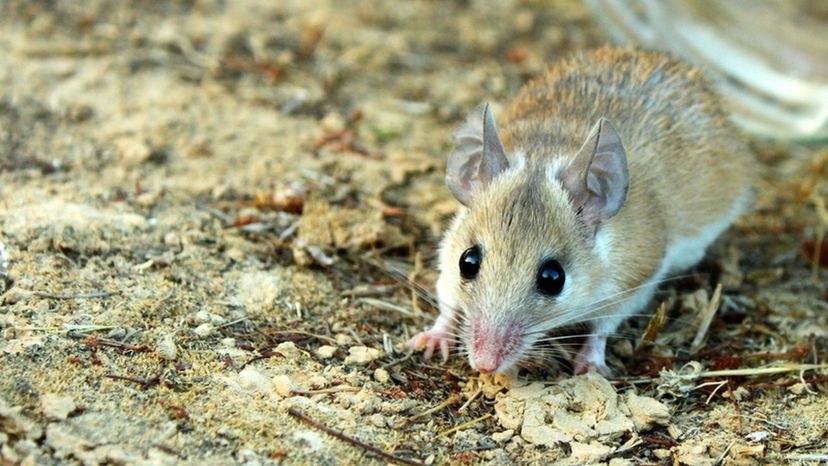
Wiki commons
Can you identify this desert animal?
Camel Spider
Spiny Mouse
The Spiny Mouse is native to Africa, and has stiff hair like a hedgehog. It also has one incredible party trick; it can regenerate damaged or lost skin, hair or cartilage in the same way a salamander regrows its tail.
Peccary
Chuckwalla
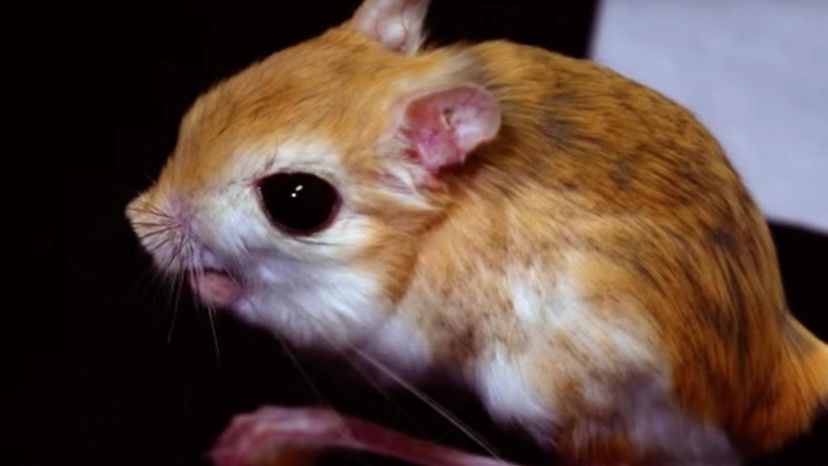
YouTube
Can you identify this desert animal?
Camel
Dung Beetle
Jerboa
Native to the Gobi or Sahara deserts, the Jerboa is the Frankenstein of desert dwellers. It has a mouse head, giant kangaroo legs and cat-like whiskers, plus extra-large eyes for night-time hunting.
Jack Rabbit
Advertisement

Wiki commons
Can you identify this desert animal?
Scorpion
Fennec
Sidewinder
Peccary
Also known as a Javelina or Skunk Pig, the Peccary is a wild desert pig with thick hair. You can distinguish it from the traditional pig by its tiny ears or tough-to-spot tail.
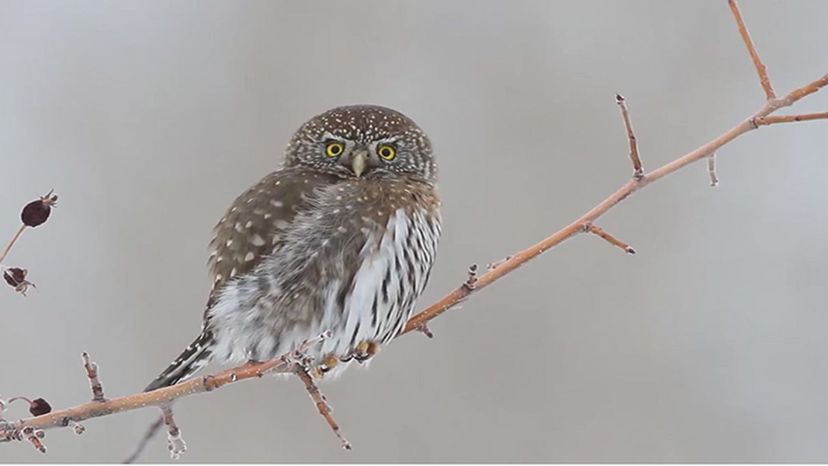
YouTube
Can you identify this desert animal?
Ostrich
Bustard
Jerboa
Pygmy Owl
The Pgymy Owl lives in the American Southwest, and loves to take up residence in tree cavities or Saguaro Cacti. Despite its small stature, it's a fierce hunter and much bolder than many larger animals.
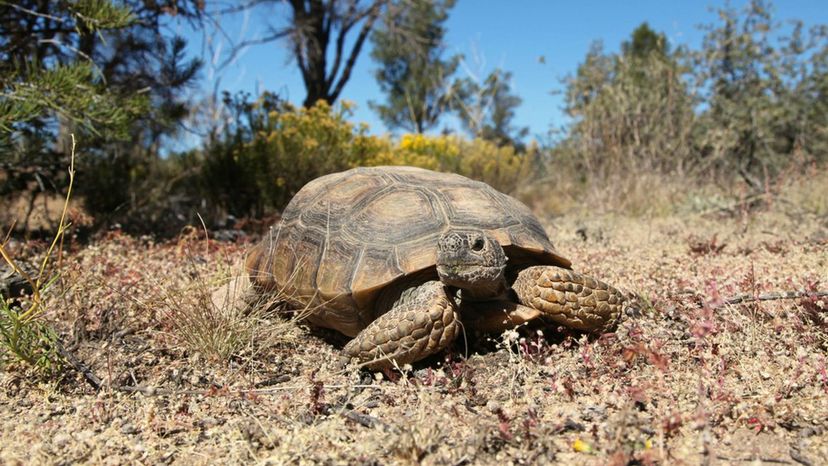
SHutterstock
Can you identify this desert animal?
Scorpion
Chuckwalla
Tarantula
Desert Tortoise
The Desert Tortoise is built perfectly for desert living. It has incredibly strong legs with sharp claws for digging, allowing it to burrow up to 6 feet underground to escape the hot sun.
Advertisement

shutterstock
Can you identify this desert animal?
Coral Snake
Kingsnake
Scorpion
Like the spider, the scorpion is an eight-legged arachnid. It has an ideal self-defense mechanism in the form of a barbed tail, which it uses to inject venom. These critters also have a hidden fat deposit under their exoskeleton, allowing them to store energy for times when food is scarce.
Pronghorn
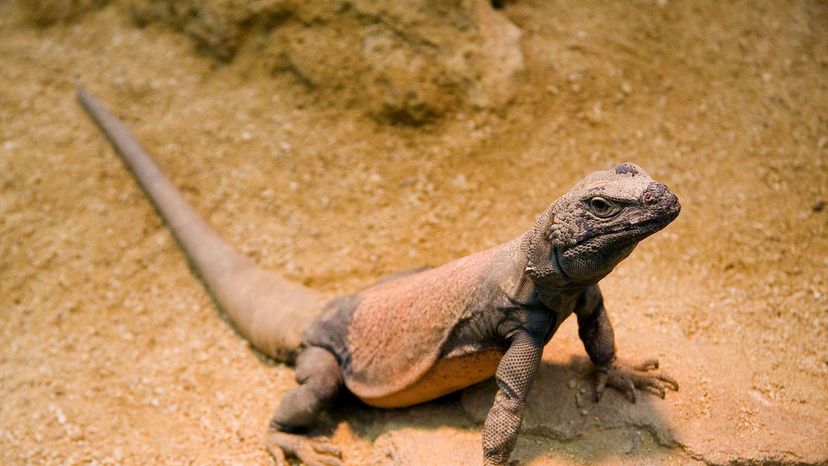
Wiki commons
Can you identify this desert animal?
Hyena
Chuckwalla
The Chuckwalla is the second largest lizard in the U.S.. With an ideal body temperature of 100 to 105 degrees F, it can only survive in warm spots like the Southwest. This lizard also has a super-cool trick -- it wedges itself between rocks and inflates its body so it's impossible for predators to reach it.
Camel
Peregrine Falcon
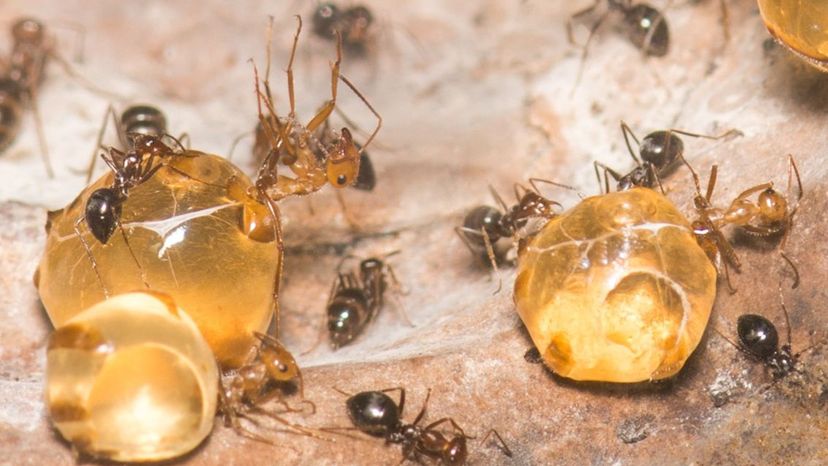
Wiki commons
Can you identify this desert animal?
Scorpion
Honeypot Ant
The Honeypot Ant is a natural marvel, engorging itself with food like a mobile pantry. In times of scarcity, other ants can feed directly from the Honeypot without harming the host.
Rattlesnake
Addax
Advertisement

shutterstock
Can you identify this desert animal?
Skink
Forget that it looks like a snake, the Skink is definitely a lizard -- albeit one with no neck and extra small legs. Despite their little legs, these critters are great diggers, which is useful for burrowing away from the heat or predators.
Rattlesnake
Monitor Lizard
Gila Monster
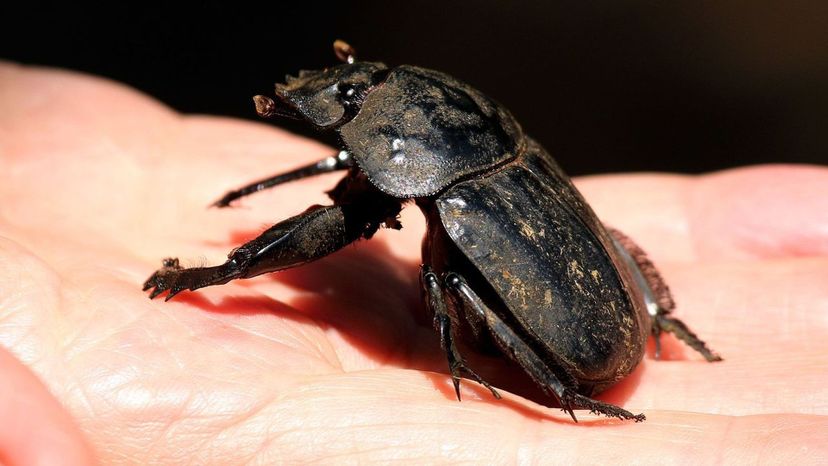
Wiki commons
Can you identify this desert animal?
Dung Beetle
Yes, the Dung Beetle does feast on the waste of other animals -- primarily herbivores. Also known as Scarabs, these beetles were highly worshipped in ancient Egypt.
Honeypot Ant
Scorpion
Tarantula
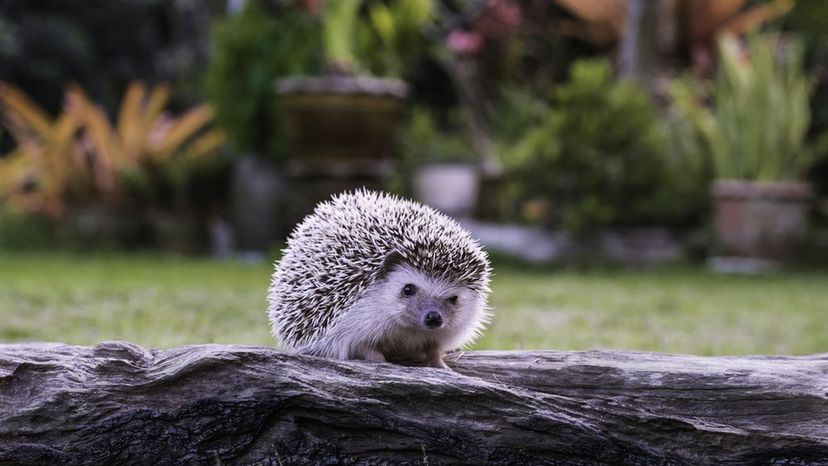
Shutterstock
Can you identify this desert animal?
Red Kangaroo
Sidewinder
Hedgehog
The desert-dwelling hedgehog is the smallest of all hedgehog varieties, weighting in around one pound. To make up for its small stature, the Desert Hedgehog often has tougher spikes than other members of its species.
Scorpion
Advertisement

Shutterstock
Can you identify this desert animal?
Chuckwalla
Desert Tortoise
Dung Beetle
Rattlesnake
The desert is home to more than 32 species of Rattlesnakes, but all share a few things in common beyond the rattle at the tip of their tails. They also have forked tongues and heat pits beneath their nostrils that help them sense prey -- and predators.
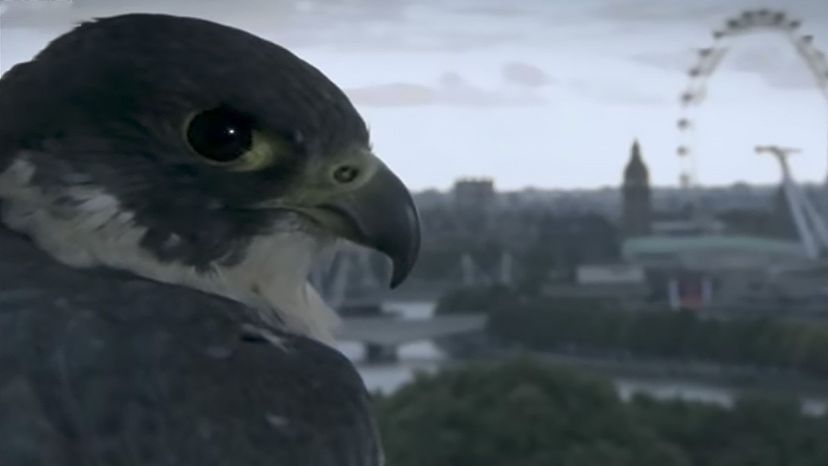
YouTube
Can you identify this desert animal?
Camel
Ostrich
Coral Snake
Peregrine Falcon
One of the most common birds of prey, the Peregrine Falcon prefers to live in wide open spaces like the desert, where it can easily spot its prey. The bird can have a wingspan of up to 3 feet, and can weigh as much as 50 pounds.
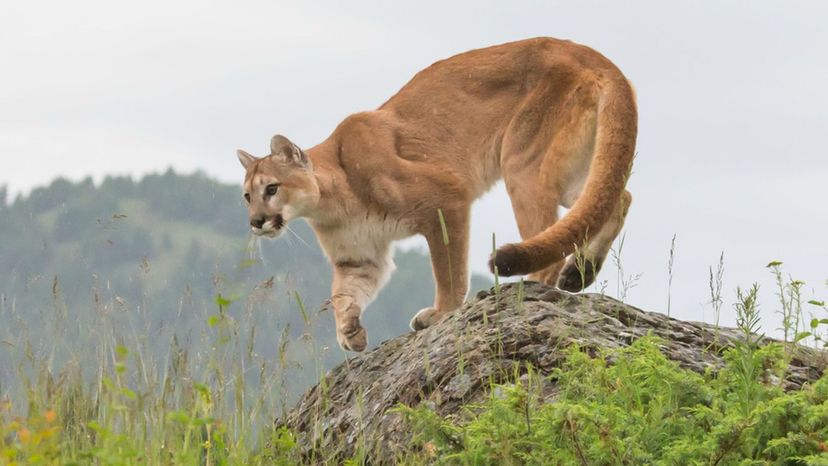
Shutterstock
Can you identify this desert animal?
Cougar
The second largest cat in North America, the cougar looks like an over-sized house cat. Like domestic cats, it purrs rather than roars, and is flexible enough to live anywhere it can find something to eat.
Leopard
Sand Cat
Caracal
Advertisement
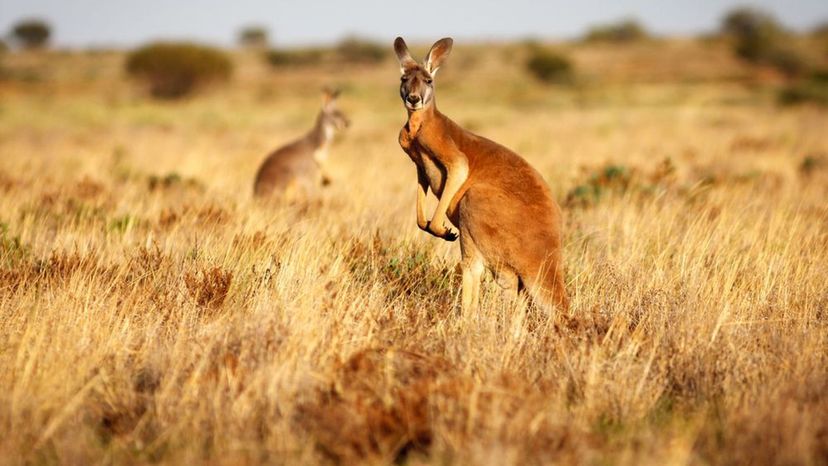
Shutterstock
Can you identify this desert animal?
Red Kangaroo
At 5 to 6 feet tall, the Red Kangaroo is the largest of all kangaroo species. It will drink water when it's available, but can also get all the hydration it needs straight from its food.
Spiny Mouse
Ostrich
Hyena
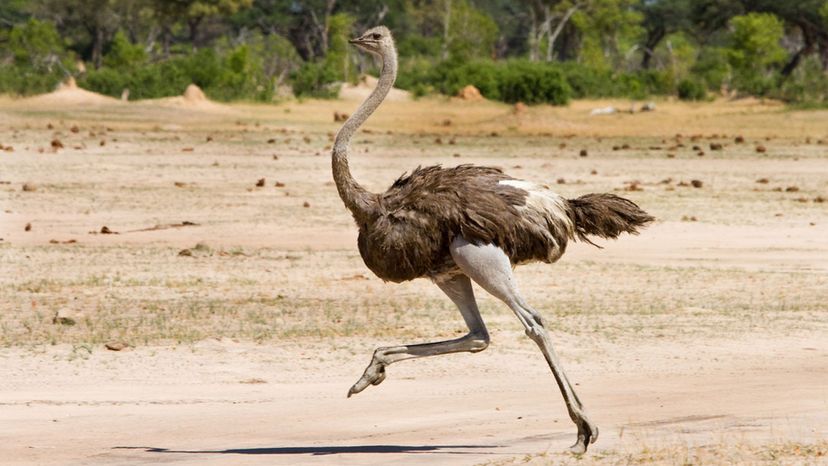
n/a
Can you identify this desert animal?
Peregrine Falcon
Bustard
Ostrich
The Ostrich is taller than most NBA players, with an average height between 7 and 8 feet. Found in Africa and on the Arabian peninsula, they are perfect desert-dwellers because they rarely need to drink, instead getting most of their water from the food they eat.
Pygmy Owl

Wiki commons
Can you identify this desert animal?
Tarantula
Sidewinder
If you see a Sidewinder, look out! This light tan venomous snake can be as long as 3 feet, and its coloring helps it blend in with the desert terrain. It's easy to recognize mostly because of the way it moves -- sideways in the shape of an "S."
Rattlesnake
Scorpion
Advertisement

shutterstock
Can you identify this desert animal?
Viper
Caracal
Pronghorn
The desert-dwelling Pronghorn is the only creature on the planet with branched horns, rather than branches antlers. While it's distinctly different from the deer, it does regularly shed its horns, just as a deer sheds its antlers.
Kingsnake
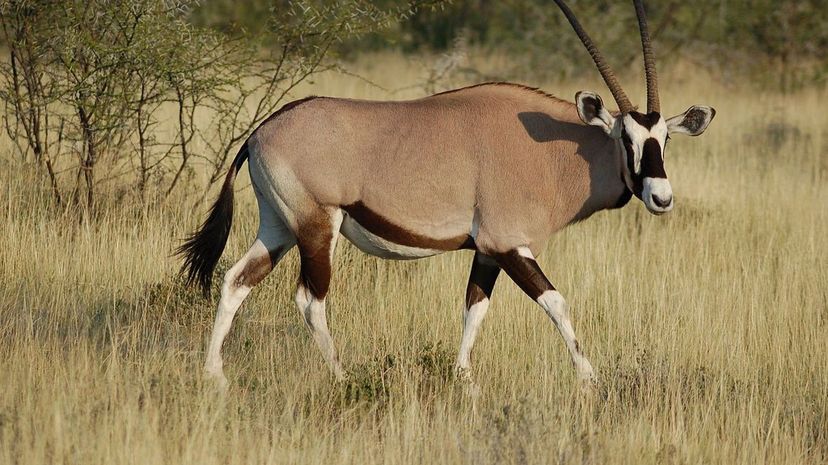
n/a
Can you identify this desert animal?
Leopard
Tarantula
Jack Rabbit
Oryx
The Oryx would look like any other small antelope if not for its horns, which are very long and straight. This critter copes with the desert heat by digging underground to escape the sun, and can get most of the moisture it needs from plants rather than a consistent watering hole.
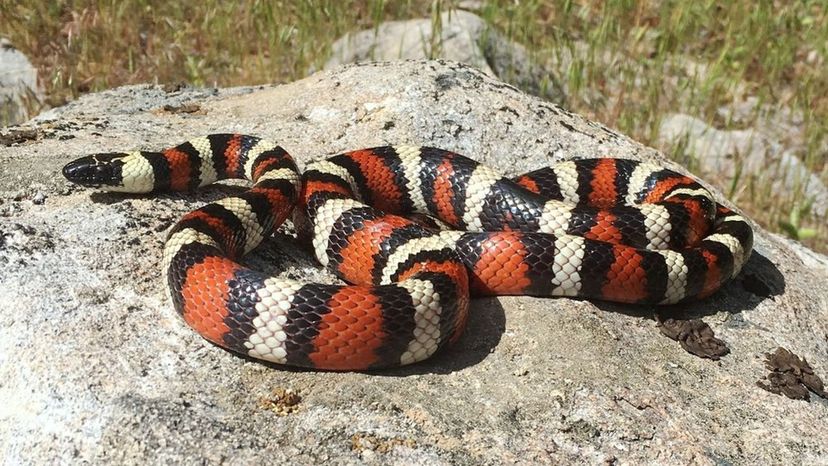
Shutterstock
Can you identify this desert animal?
Kingsnake
The Kingsnake is easy to recognize because of its distinctive appearance -- black or brown with bright yellow speckles along its length. This snake is not venomous, and might even play dead if it feels threatened.
Tarantula
Scorpion
Llama
Advertisement

Shutterstock
Can you identify this desert animal?
Hyrax
Dingo
Found in the Australian Outback, the Dingo is a wild dog that can weigh up to 35 pounds. It's very flexible in its food sources, and will even act as a scavenger when there is nothing else available to nosh on.
Bustard
Peregrine Falcon
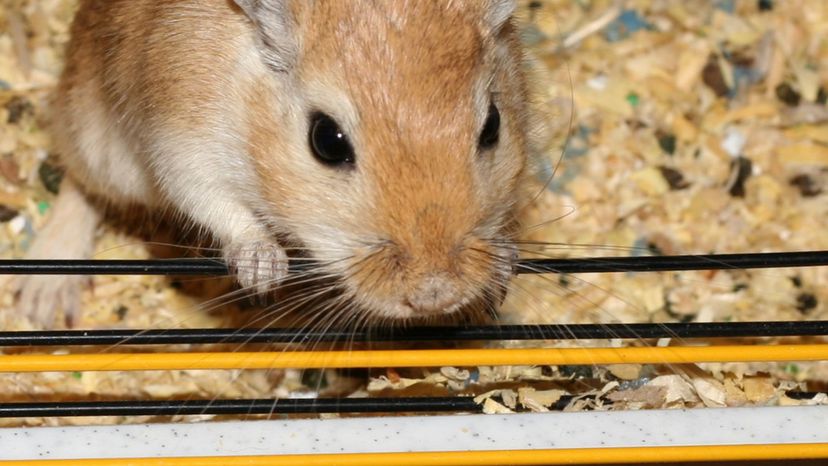
Wiki commons
Can you identify this desert animal?
Spiny Mouse
Hedgehog
Gerbil
No, domestic gerbils couldn't survive in the desert, but some wild species can. This burrowing rodent has the ability to withhold urination for long periods to avoid dehydration when water is scarce.
Tarantula
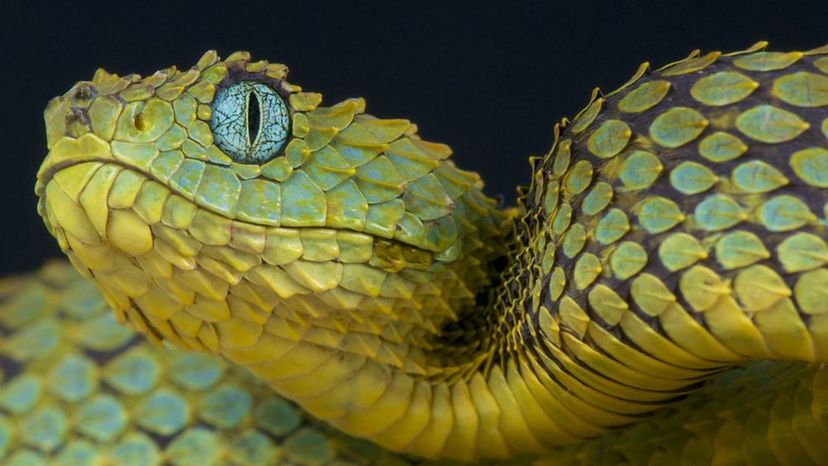
shutterstock
Can you identify this desert animal?
Jack Rabbit
Scorpion
Kingsnake
Viper
The Desert-Horned Viper moves like the Sidewinder, but is mostly found in the Sahara Desert. It has an anvil-shaped head, prominent devil horns, and delivers 13 toxins when it bites -- though the bite is generally not fatal to humans.
Advertisement
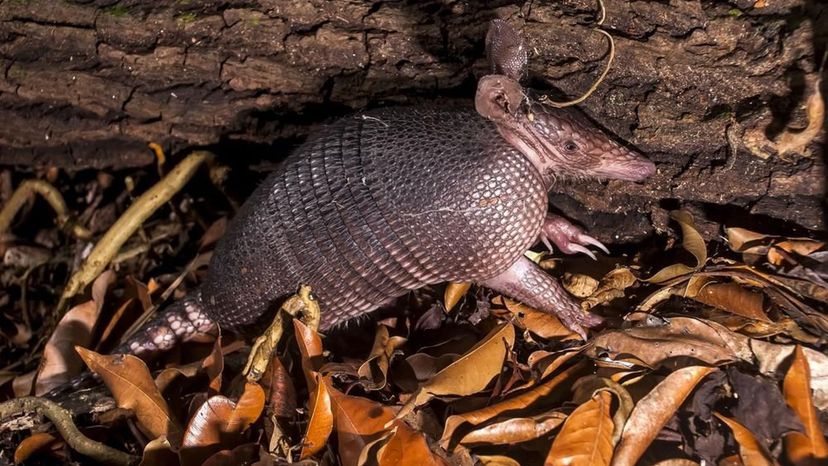
shutterstock
Can you identify this desert animal?
Hyrax
Bustard
Jack Rabbit
Armadillo
The Armadillo is perfectly suited to desert living. Not only does the creature have a low body temperature by nature, but it also has very little fat, which would keep it from surviving in anywhere but the warmest areas.
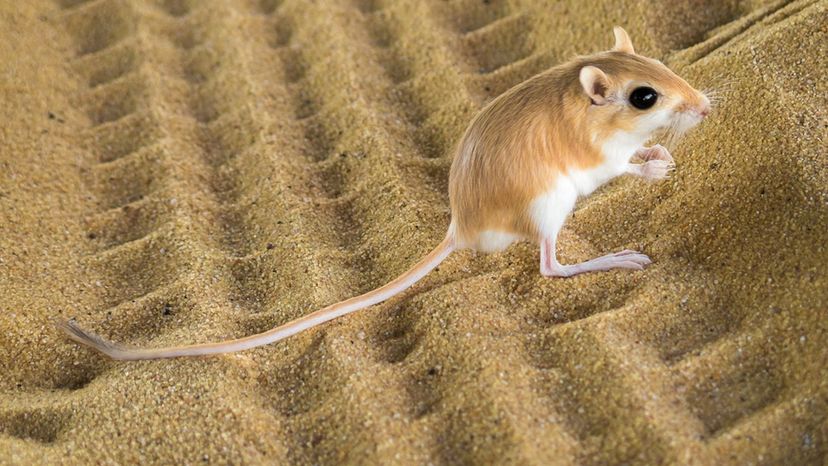
Shutterstock
Can you identify this desert animal?
Prairie Dog
Jackal
Tarantula
Kangaroo Rat
Despite its name, the Kangaroo Rat is not a Marsupial. It's actually a rodent, but gets its kangaroo moniker from its powerful rear legs, which allow it to jump 6 feet across the desert.
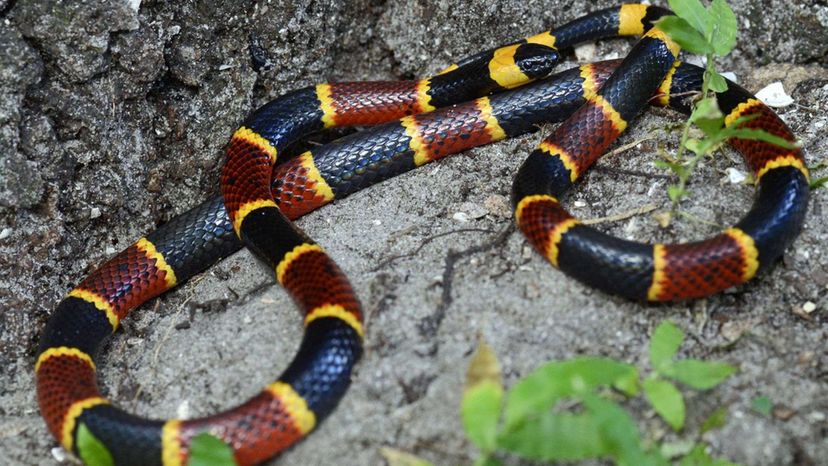
Shutterstock
Can you identify this desert animal?
Coral Snake
Watch out for Coral Snakes. This desert dweller might look pretty, with its rings of red, black and yellow, but it's also deadly -- with twice the venom potency of the Rattlesnake.
Caracal
Pronghorn
Viper
Advertisement
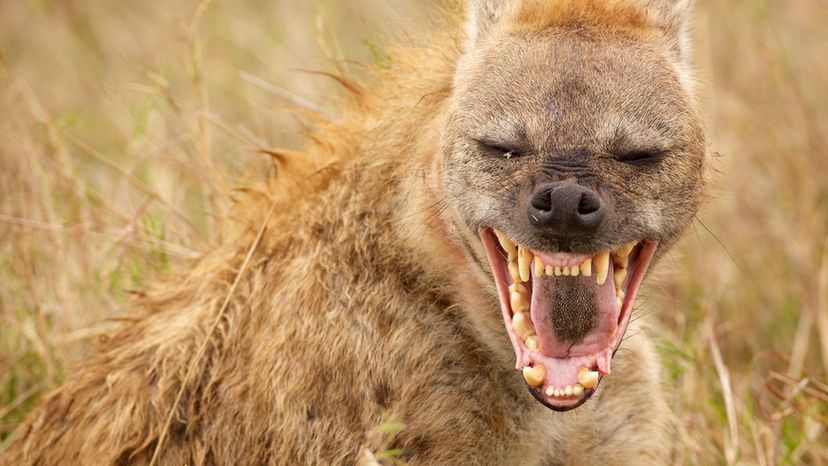
n/a
Can you identify this desert animal?
Hyena
The Spotted Hyena, which can weight up to 190 pounds, may look a bit like a canine, but shares much more in common with felines. It thrives in the desert because of its ability to adapt to hunting various food sources, or even scavenging for food when times are tough.
Armadillo
Red Kangaroo
Addax
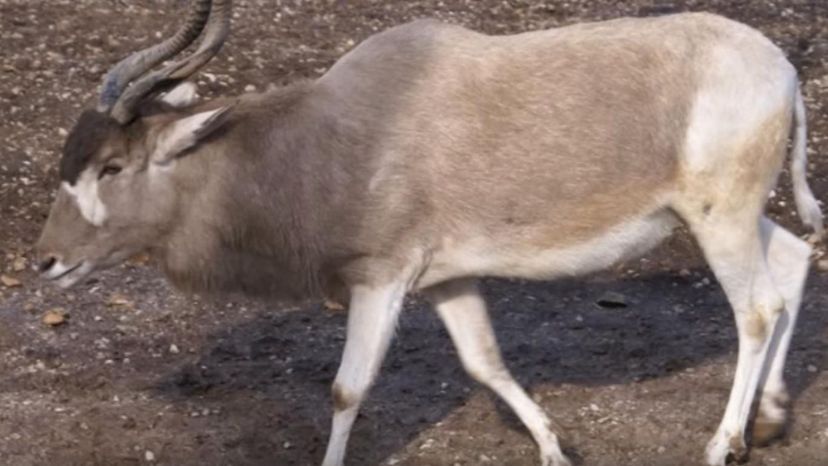
YouTube
Can you identify this desert animal?
Sand Cat
Addax
The Addax is an antelope with wide hooves, which allows it to maneuver with ease in the sandy desert. It has a white coat which reflects heat in the summer, then darkens in the winter to absorb heat to help the animal endure the cool nights.
Bighorn Sheep
Arabian Fox
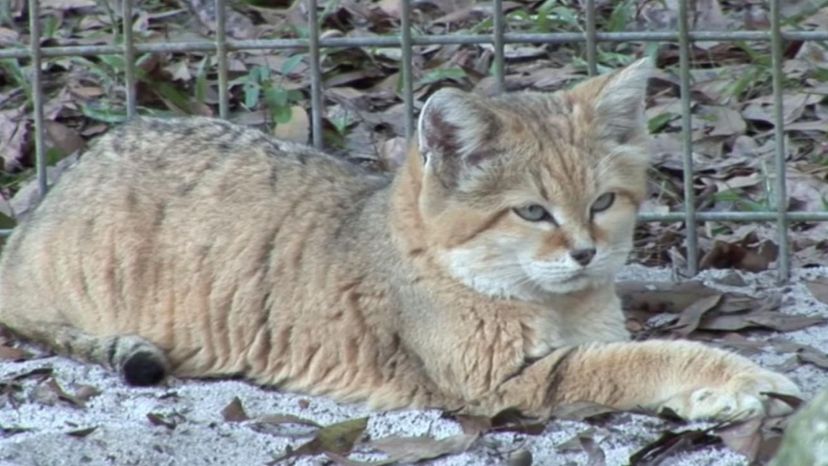
YouTube
Can you identify this desert animal?
Leopard
Dingo
Sand cat
Sand cats look like small house cats, but have some special features that make them well-suited to desert living. The cat has dense hair and pads on its feet to withstand hot sand, and can live without water for weeks with little problem.
Jackal
Advertisement
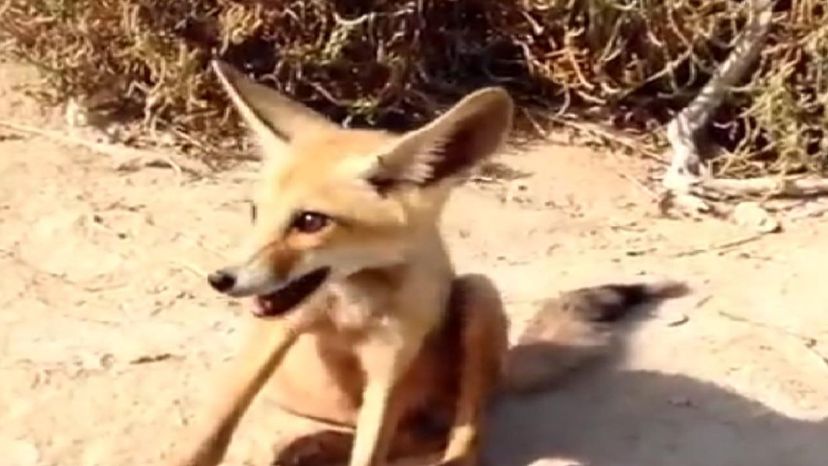
YouTube
Can you identify this desert animal?
Cougar
Arabian Fox
Smaller than the average fox, the Arabian Red Fox has extra furry feet to balance on shifting sand and avoid burns. The creature is most active at night, and typically weighs less than 10 pounds.
Caracal
Pronghorn
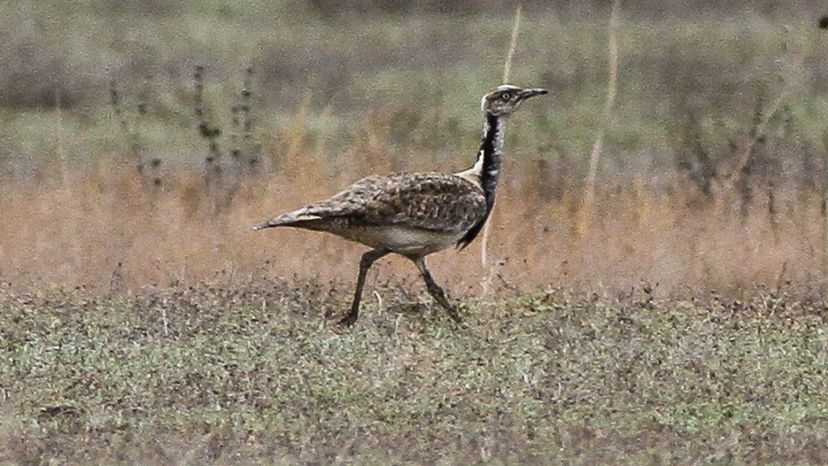
Wiki commons
Can you identify this desert animal?
Ostrich
Roadrunner
Bustard
Related to the Crane, the Bustard is one of the largest of all the flying birds, and can measure as long as 6 feet.
Pygmy Owl
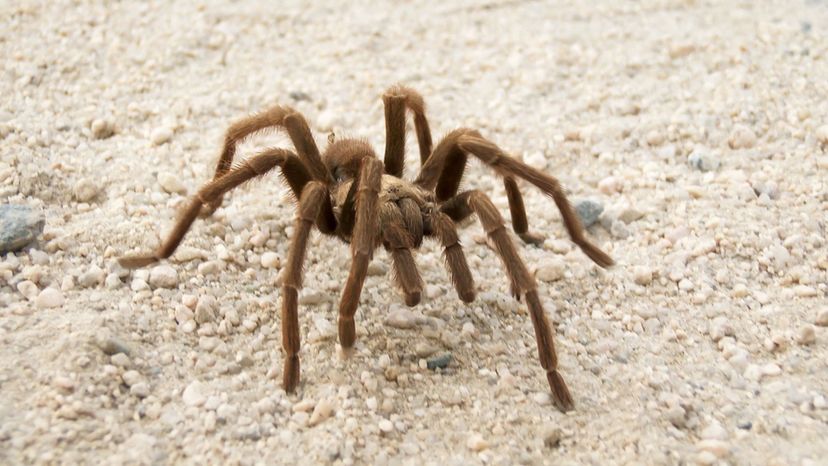
Shutterstock
Can you identify this desert animal?
Scorpion
Tarantula
Tarantulas may look scary, with their thick, hairy legs, but take comfort in the fact that their venom is weaker than a typical bee sting. They live underground in the desert and grab prey with their legs rather than building complicated webs.
Camel Spider
Skink
Advertisement
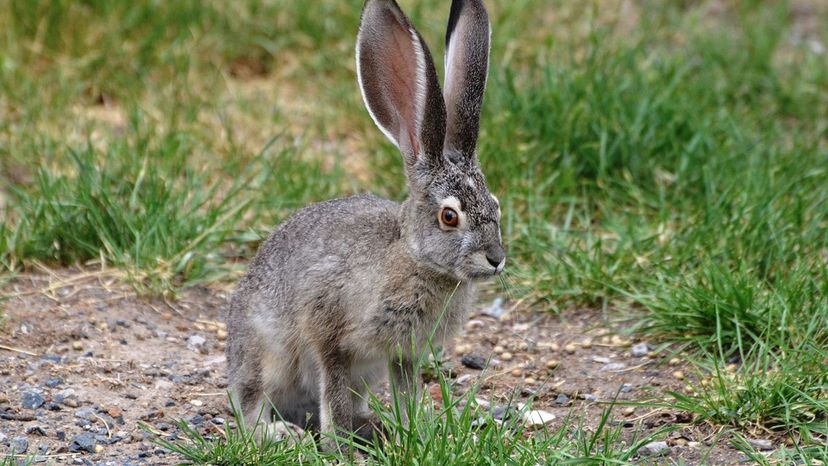
Wiki commons
Can you identify this desert animal?
Camel
Meerkat
Cotyote
Jack Rabbit
The Black-tailed Jack Rabbit, or American Desert Hair, weighs between 3 and 6 pounds yet has giant black ears that look comical on its small body. The critter survives in the desert by sourcing moisture from plants and cacti.

n/a
Can you identify this desert animal?
Jackal
Part of the dog family, the Jackal weighs anywhere from 15 to 35 pounds. Unlike many other animals, males and females mate for life, and will often mourn a lost mate for the rest of their days.
Desert Tortoise
Chuckwalla
Jerboa

shutterstock
Can you identify this desert animal?
Llama
The Llama gets much of its water from the grass it eats, and has special glands on its legs that help regulate body temperature. This desert dweller is used for transport, like a camel, and can carry up to a third of its weight on its back.
Coyote
Roadrunner
Camel
Advertisement

n/a
Can you identify this desert animal?
Meerkat
Honeypot Ant
Hyrax
Known as the Rock Rabbit, the Hyrax has special eyelids for desert living that help to keep out sun and sand. This critter may look like a rabbit, but believe it or not, its closest relative is actually the elephant -- Yes, really!
Skink

shutterstock
Can you identify this desert animal?
Spiny Mouse
Coyote
Scorpion
Prairie Dog
Prairie dogs resemble chubby little squirrels and can weigh up to 3 pounds. Despite their name, they are rodents, not dogs, and only got their name from the barking sound they produce.

Shutterstock
Can you identify this desert animal?
Sand Cat
Thorny Devil
Coyote
Leopard
Native to Africa and Asia, the Leopard can run up to 40 mph, and leap as long as 20 feet. They rank as the fourth largest cat in the world, and are known for their adaptability and ability to thrive in almost any climate, including the desert.
Advertisement
You Got:
/49
Shutterstock
